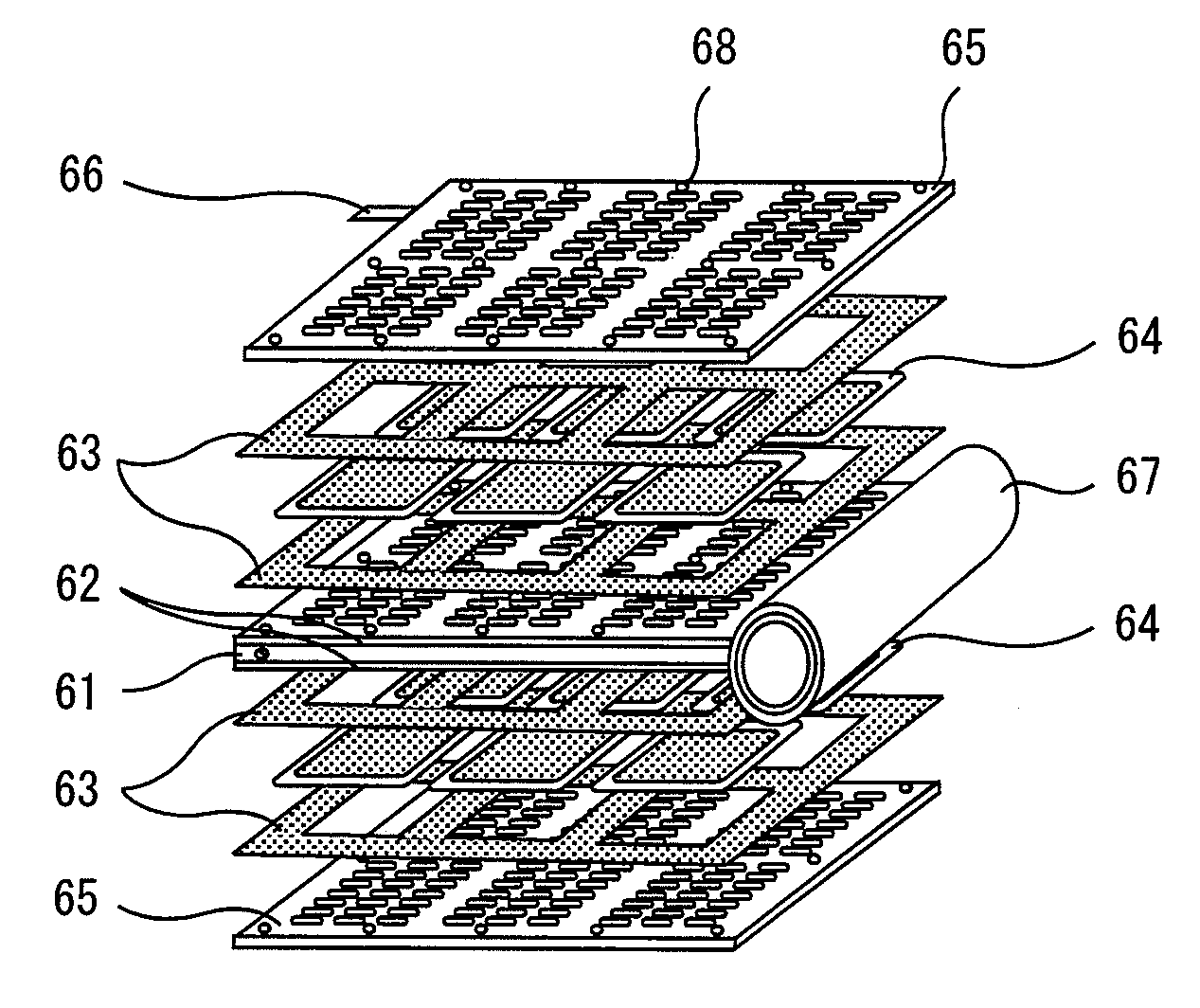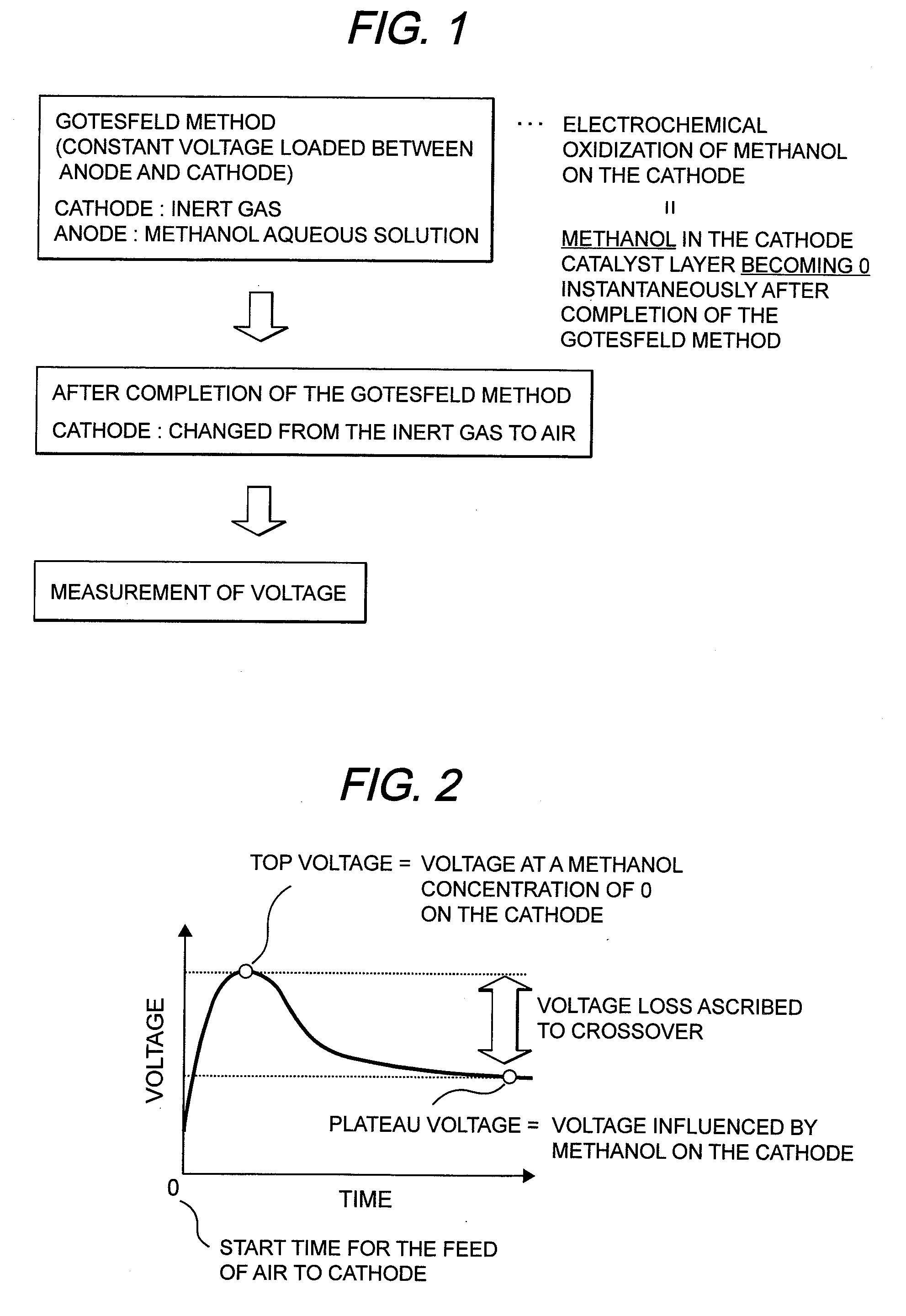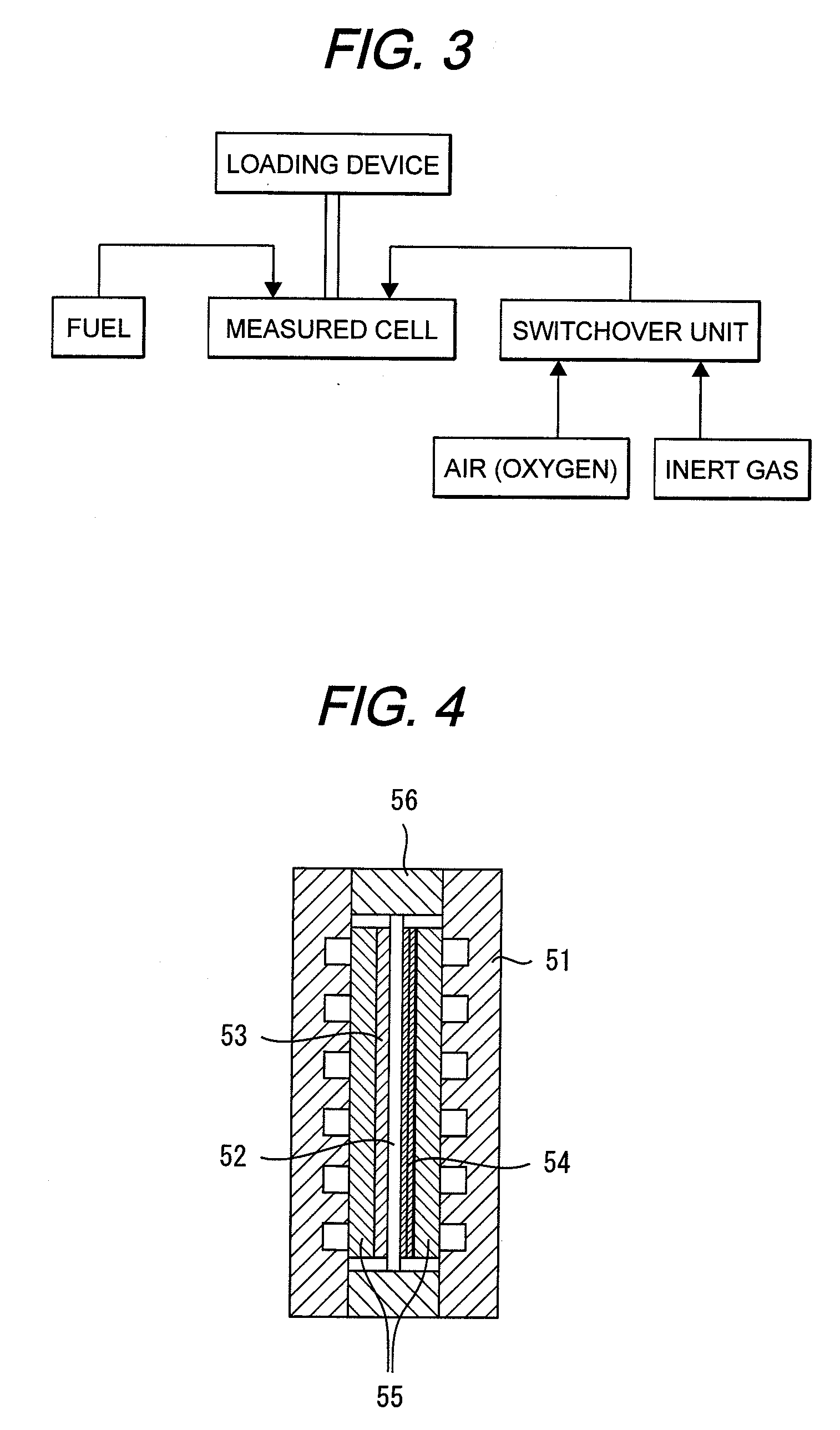Method and apparatus for measuring crossover loss of fuel cell
- Summary
- Abstract
- Description
- Claims
- Application Information
AI Technical Summary
Benefits of technology
Problems solved by technology
Method used
Image
Examples
first embodiment
[0046]S-PES (ion exchange capacity of 1.3 meq / g) was provided as a membrane. A varnish was prepared by dissolving S-PES (ion exchange capacity of 1.3 meq / g) in dimethylacetamide. The concentration of the solute was set at 30 wt %. The varnish was coated onto a glass sheet by means of an applicator and dried at 80° C. for 1 hour and then at 120° C. for 3 hours in a vacuum dryer, thereby evaporating the dimethylacetamide solvent. Thereafter, the coated film was peeled off from the glass sheet and immersed overnight in a 1M H2SO4 aqueous solution and protonated to obtain a single electrolyte membrane of S-PES (ion exchange capacity of 1.3 meq / g). The thus obtained electrolyte membrane was transparent. The thickness of the electrolyte membrane was at 50 μm.
[0047]MEA was made in the following way. Platinum-bearing carbon TEC10V50E (amount of supported Pt: 50 wt %), made by Tanaka Kikinzoku Kogyo K.K., was provided as a cathode catalyst and platinum and ruthenium-bearing carbon TEC61V54 (...
second embodiment
[0057]Nafion 112 (with a thickness of about 50 μm), made by Du Pont Kabushiki Kaisha, was used as an electrolyte membrane. In the same conditions and procedure as in the First Embodiment, MEA's were made. These MEA's were subjected to measurement of a crossover loss according to the novel crossover measuring method of this embodiment. FIG. 12 shows a crossover loss relative to a methanol concentration. The relation between the crossover loss and the methanol concentration became non-linear.
third embodiment
[0059]MEA was made under the same conditions as in the First Embodiment. This MEA was assembled in a cell shown in FIG. 4. The temperature of the cell was set at 70° C. Nitrogen gas was fed to the cathode and hydrogen gas was fed to the anode each at 70° C. after humidification. In this condition, a voltage of 0.8 V was loaded between the anode and the cathode for 10 minutes. A running current density was at 0.3 mA / cm2. Thereafter, air was fed to the cathode in place of the nitrogen gas, followed by measurement of a voltage. As a result, a top voltage was 1100 mv, and a plateau voltage was 1050 mv. As a result, a hydrogen crossover loss obtained was at 50 mV.
PUM
 Login to View More
Login to View More Abstract
Description
Claims
Application Information
 Login to View More
Login to View More - R&D
- Intellectual Property
- Life Sciences
- Materials
- Tech Scout
- Unparalleled Data Quality
- Higher Quality Content
- 60% Fewer Hallucinations
Browse by: Latest US Patents, China's latest patents, Technical Efficacy Thesaurus, Application Domain, Technology Topic, Popular Technical Reports.
© 2025 PatSnap. All rights reserved.Legal|Privacy policy|Modern Slavery Act Transparency Statement|Sitemap|About US| Contact US: help@patsnap.com



